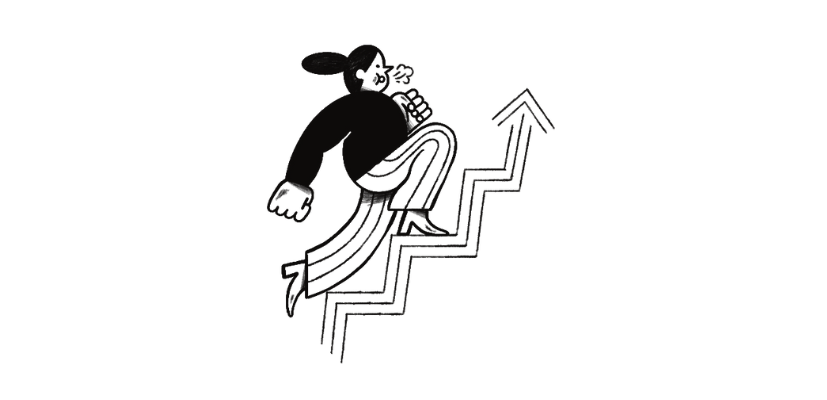Limited Liability Companies in Denmark - A/S vs. ApS
- 3 minute read
- Legal and Corporate Law
When establishing a company in Denmark, it is important to get acquainted with the various types of company types. In this blog post, we will be explaining the two types of limited liability companies (‘kapitalselskaber’) in Denmark, how these two can be similar, and more importantly, how they differ from one another.
Similarities between A/S and ApS.
On paper, there are quite a few areas where limited liability companies are similar, whether they are public or private.
These are areas where limited liability companies – as a category – may vary from other company types.
Similar regulations.
Limited liability companies are regulated by The Danish Companies Act, which together with the Articles of Association (AoA), set out the overall rules of how a company should be run. The AoA is made when the company is established, meaning that the founders are the ones to set out the first set of rules in the AoA.
The minimum requirements for the AoA are stated in The Danish Companies Act, and include:
The company’s name.
Purpose.
Size of share capital.
Number of shares.
Rights of the shares.
Management structure.
Notice to the general meeting.
Accounting year.
If the owners want to change or add to the AoA, it must be done at a general annual meeting with a 2/3 majority. However, these changes can never go against any rules stated in The Danish Companies Act.
Similar document requirements.
The Danish Companies Act states the requirements for the documents that must be made when establishing a limited liability company, and the documents that must be made throughout the company’s lifetime. They are all categorized as company documents.
The documents required for incorporation are:
Memorandum of Association.
Articles of Association.
Shareholder Register.
The documents required throughout the company’s lifetime include:
Board meeting minutes
General meeting minutes
Ultimate Beneficial Owner investigations documentation
Appendixes used when making decisions at board meetings or general meetings (e.g. valuations or statements from an auditor).
All documents categorized as company documents must be stored for at least 5 years after the end of the financial year that the documents relate to.
Similar taxation.
The general rule for public- and private limited liability companies is that they are taxed in the same way on a company level, as limited liability companies are seen as separate legal entities. This means that they will be paying taxes on the taxable profit. The company income tax in Denmark is 22%.
Differences between A/S and ApS.
Now that we have an overview of how private- and public limited liability companies are similar, it is also vital to highlight how they differ.
A general way to regard the private limited liability company (ApS) and public limited liability company (A/S) is to consider the former as a light version of the latter.
Different capital requirements.
One of the major differences between the two (ApS and A/S) is that they require different minimum of share capital.
ApS: Minimum share capital of DKK 40,000. Can be in other forms of capital than cash.
A/S: Minimum share capital of DKK 400,000. Can be in other forms of capital than cash.
Basically, if you are a single person starting a company, you must cover the share capital alone, and by that, you are also liable for that amount. When multiple shareholders contribute to the share capital, they will only be liable for the part of the minimum share capital that they have deposited.
As the names indicate, public limited liability companies can offer the company share to the public, which private limited liability companies cannot.
Different management structures.
Generally speaking, limited liability companies can have one of two types of management structures: Two-tier or a one-tier management structure. A/S companies are required to have a two-tier management structure, whereas ApS companies are free to opt for the structure that fits them. ApS companies are also not subject to the same rules regarding the board and its members.
Two-tier management structure:
Here, management must consist of either a Board of Directors and an Executive Management, or a Supervisory Board and an Executive Management. This structure ensures a two-layered management, where the board handles strategic matters, and the executive management handles day-to-day matters. For A/S companies, the Supervisory Board must consist of at least 3 individuals, and an executive manager cannot be part of this board. Also, a Board of Directors must consist of at least 3 individuals, but here, the executive manager can be part of the board, but cannot be made chairman. These rules do not apply for ApS companies.
Typically, the board is selected at general annual meetings, and then the board decides on the executive management. Some companies also have rules for how the employees may have a say in electing board members.
One-tier management structure:
This structure is a lot more flexible regarding the form of management and how management is put together. There must however be a Board of Directors or a Supervisory Board. The difference here is that there are not the same requirements for the number of board members or who it must consist of. So, the board here can consist of one person or the executive management. And an executive manager can also be elected as chairman.

Want to know more?
Did that provide you with a clear overview of the limited liability companies in Denmark? Do not hesitate to reach out, if you want more information about managing the different company types in Denmark.
At mighty admins, we can assist you with:
Company formations and A-Z compliance assistance.
Creating annual wheels for you, so you never miss a filing or payment deadline.
Domiciliation and registered address at up to 25% discount compared to other providers.
… And much more!







